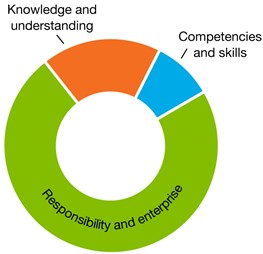Explore content
Typically, by the end of Foundation Year, students:
Understand computer mediated communications
understand that messages are recorded, viewed or sent in computer mediated communications for others to receive
Identify the impacts of ICT in society
identify how they use ICT in multiple ways on multiple devices
Typically, by the end of Foundation Year, students:
Select and evaluate data and information
explain how located data or information was used
Typically, by the end of Foundation Year, students:
Recognise intellectual property
recognise ownership over their own digital work
Apply digital information security practices
follow class rules about using digital information
Apply personal security protocols
follow class rules when sharing personal information with known audiences and demonstrate an awareness of applying social protocols when using ICT to communicate
Define and plan information searches
use ICT to identify where information is located
Locate, generate and access data and information
use ICT to identify where information is located
Generate ideas, plans and processes
use ICT to follow or contribute to a simple plan for a solution
Generate solutions to challenges and learning area tasks
use ICT as a creative tool to generate simple solutions, modifications or data representations for personal or school purposes
Collaborate, share and exchange
use purposefully selected ICT tools safely to view information shared by trusted adults


